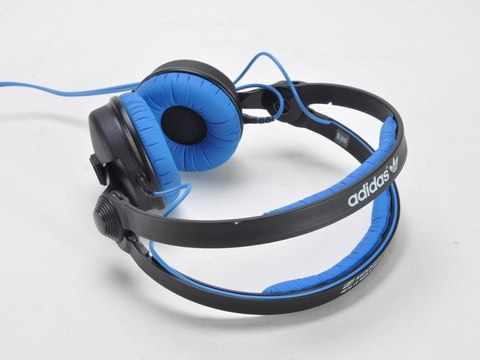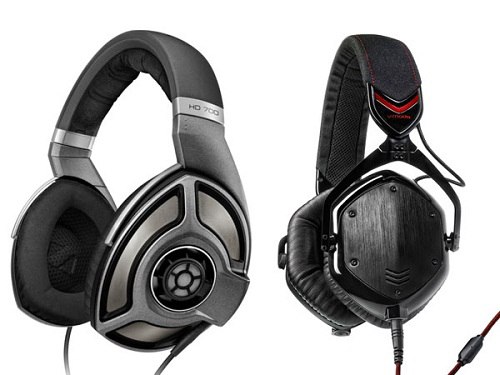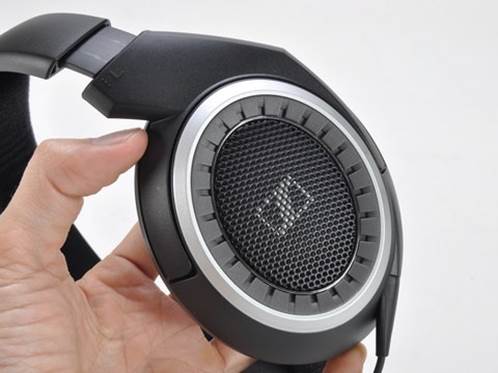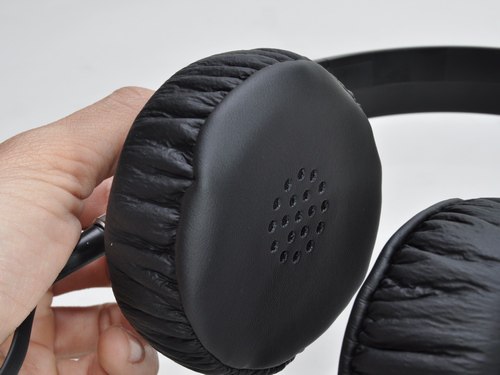Compared to closed headphone, open headphone
delivers wide sound space, more detailed quality yet less powerful bass.
We have tested the features of both on-ear
and around-ear models, in order to bring users most basic knowledge to
differentiate and select these products.
On-ear or around-ear designs
Many brands start appearing in the market
of closed headphone, but overall there’re only 2 types of design: on-ear and
around-ear. On-ear model is also called supra-aural headphone which basically
has two ear cups directly covering user’s ears. Meanwhile, around-ear headphone,
also called circumaural headphone, is equipped with 2 large-diameter ear cups
featuring cushions that cover user’s ear wholly.

Sennheiser
HD 25 Originals is an on-ear model using closed design
These two headphone types have distinctive design
features that suits specific user’s demand. For instance, on-ear cups often own
small drivers that fit mobile usage. On-ear drivers are regularly equipped with
thick cushion, comforting user while listening. In some on-ear models, the
cushion may be made of artificial leather. This detail makes the product look
more luxurious and eliminates noise effectively but it comes quite inconvenient
during use. With this kind of design, user should choose models that
incorporate rotatable joint on the head band to lessen the pressure created by
the ear cups onto user’s ears.

V-Moda
M100 (right) and Sennheiser HD 700 are two models using open design
Totally different from on-ear models, round-ear
ones often have bigger ear cups equipped with large-diameter drivers, such as
Sennheiser HD 700 featuring 40mm-diameter drivers or V-Moda using 50mm-diameter
drivers. Due to large ear cups, manufacturers of such design have more space to
place the membrane inside each driver – to extend/narrow the distance between
the membranes of the speaker and the ear, to place the membrane at a tilt angle
or even to equip more drivers into each ear cup for better audio experience.
Besides above advantages, around-ear
headphone also has additional disadvantages: large size which is a difficult
for mobility and stylized ear cup (like Razer Eletcra) which doesn’t fit all
people’s ear size.
Closed-back or open-back designs
Similar to other headphone product line,
both on-ear and around-ear models are designed following closed-back or
open-back form. The simple to distinguish headphone’s style is to look at ear cups
exterior. Closed-back models having outer surface covered are, for instance,
Phiation PS 500 and Sennheiser HD 419. Meanwhile, open-back models often
doesn’t use any material to veil ear cup’s exterior but features metal grid or
tiny holes, commonly seen in V-Moda M-100, Sennheiser HD 570x and Grado SR225i.
However, note that this distinguish method
is not completely accurate as some closed-back models still use metal grid as
décor, like in Sennheiser HD 439.

Sennheiser
HD 439
Each type of design has its own pros and
cons. Particularly, closed-back design is capable of eliminating passive noise
form outside environment thanks to its cushion contacting user’s ear directly. Bass
sound quality of closed-back headphones is often better than that of open-back
models costing similarly. Though, this sound-isolated design somehow makes
sound unnatural. Closed-back models are also uncomfortable, making user sweat
in long use.
In addition, closed-back design also brings
user a cramped feeling and limited sound space. A closed-back headphone can
only considered good if it is able to create no narrow sound space. But, when
compared with open-back models featuring similar prices, closed-back headphones’
sound space is not as wide.

The
on-ear Sony MDR-XB300 features thick cushion coated by artificial leather,
efficient in eliminating noise
For instance, with the open-back SR225i
Grado, listener can still hear outer surrounding round while around people may
be able to hear what is listened to. This headphone’s bass is not as heavy as
that from closed-back ones. Though, Grado SR225i is still considered as a
headphone that creates excellent quality, clear treble, smooth mid-range and
details higher than that from any closed-back models available in the market.
As we can say, although open-back models
are not suitable for noisy condition while bass is not as deep as from
closed-back ones, if you need a headphone which can provide natural sound, good
detail and wide sound space, open-back models are idea ones.
In general, for noisy environments, an
on-ear closed-back headphone is a suitable option thanks to effective noise
elimination. However, if your budget is large, you can purchase an around-ear
closed-back model which actively removes noise. In case you prefer more natural
sound with high detail and wider sound space, on-ear/around-ear open-back
models must be taken into account.